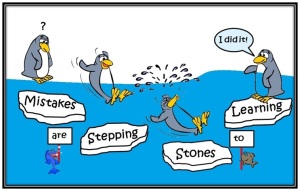When forming groups in class for group activities, my usual method is to have students count consecutively out loud up to the number of groups we need, then repeat around the room. Sounds simple enough, but inevitably someone will count past the number of groups we need, or they lose track of where they are. It’s actually quite funny for a room full of adults not to get this right. A classmate shared this blog entry for some fun and creative ways to form groups. Here are some of the ideas from the blog, as well as some of my own, inspired by the writer:
Pass out one playing card to each student – this way you can separate them by suite, evens, odds, factors of a number (factors of 6), the same number (four 9’s), card-runs (2,3,4,5 or 6,7,8 depending on how big you want the group), divisible by, etc. Great versatility, love this idea!
Pairing words or concepts – pass out flash cards with words or concepts written on them and ask students to find their partner. The best thing about this method is that you can make it relevant to the lesson at hand, for example if teaching physics, “e” would need to find “mc2”. Equations, formulas, definitions, all work well.
Table groups – before students enter the classroom, organize the tables and chairs according to the number of groups you would need. The students will naturally form the groups when they choose their seat. This method is best if you want to use student-formed groups, because they will likely sit with others who they are comfortable with, but it also eliminates the biggest challenge with student-formed groups: the social stigma when someone is left out and not chosen to be in any group.
Burger Buddies – have learners choose the fast food establishment they like the best. Have choices for the number of groups that you would like. Example: Which do you prefer? McDonald’s, Burger King, Hardee’s, Subway, etc. It doesn’t have to be burgers, any favourite would work the same way: favourite genre of music or films, least favourite subject in school. This strategy works well if you are trying to build rapport between students.
What brilliant ideas! Yay, no more boring counting to five!



